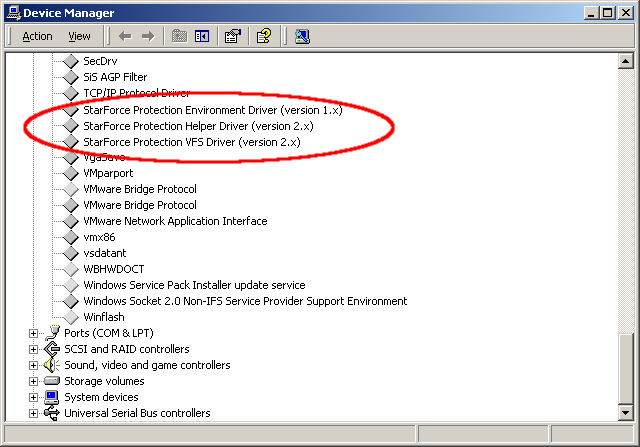Microsoft ES688 Plug and Play AudioDrive Free Driver Download for Windows XP, 2000, NT4, ME, 98SE, 98 - SideWinder_4.0_CD.zip (598076). World's most popular driver download site.
-->
Device Manager lists the devices that are installed in the computer. Myob premier download. By default, certain devices are not shown in the list. These hidden devices include:
Devices that have the device node (devnode) status bit DN_NO_SHOW_IN_DM set.
There is a devnode for each device on a machine and the devnodes are organized into a hierarchical Device Tree. The PnP manager creates a devnode for a device when the device is configured.
A devnode contains the device stack (the device objects for the device's drivers) and information about the device such as whether the device has been started and which drivers have registered for notification on the device.
Devices that are part of a setup class that is marked as a NoDisplayClass in the registry (for example, printers and non-PnP drivers)
Here you can download drivers for Fujitsu AMILO La 1703 laptop, or download software for automatic driver installation and update from DriverPack Solution. Fujitsu AMILO La1703 Drivers Download This page contains the list of device drivers for Fujitsu AMILO La1703. To download the proper driver, first choose your operating system, then find your device name and click the download button. Fujitsu siemens amilo la 1703 sound drivers. Fujitsu AMILO La 1703 Drivers Download This page contains the list of device drivers for Fujitsu AMILO La 1703. To download the proper driver, first choose your operating system, then find your device name and click the download button.
Devices that were physically removed from the computer but whose registry entries were not deleted (also known as nonpresent devices).
Note
Starting with Windows 8 and Windows Server 2012, the Plug-and-Play Manager no longer creates device representations for non-PnP (legacy) devices. Thus there are no such devices to view in the Device Manager.
Asrock h67m-ge/ht. Note
Users should never have to view nonpresent devices because a nonpresent device should not have their attention and should not cause any problems. If a user has to view your device when it is not present, there is likely a problem with your driver design. However, during testing, a developer might have to view such devices.
To include hidden devices in Device Manager display, click View and select Show hidden devices.
Prior to Windows 8, to view nonpresent devices, you must set the environment variable DEVMGR_SHOW_NONPRESENT_DEVICES to 1 before you open Device Manager, then open Device Manager, and on the View menu, click Show hidden devices.
To permanently set the user environment variable DEVMGR_SHOW_NONPRESENT_DEVICES to 1, use the Advanced tab of the system property sheet. After you set this environment variable, run Device Manager and select Show hidden devices.
-->Microsoft Plug And Play Software
Plug and Play (PnP) is a combination of hardware and software support that enables a computer system to recognize and adapt to hardware configuration changes with little or no intervention by a user. A user can add devices to, and remove devices from, a computer system without having to do awkward and confusing manual configuration, and without having knowledge of intricate computer hardware. For example, a user can dock a portable computer and use the docking station keyboard, mouse, and monitor without making manual configuration changes.
PnP requires support from device hardware, system software, and drivers. Initiatives in the hardware industry define standards (such as the PnP ISA definition and the PC Card standard) for easy identification of add-in boards and basic system components. This Windows Driver Kit (WDK) documentation focuses on the system software support for PnP and how drivers use that support to implement PnP.
The system software support for PnP, together with PnP drivers provides the following:
Automatic and dynamic recognition of installed hardware
The system software recognizes hardware during initial system installation, recognizes PnP hardware changes that occur between system boots, and responds to run-time hardware events such as docking or undocking and device insertion or removal.
Hardware resource allocation (and reallocation)
The PnP manager determines the hardware resources requested by each device (for example, input/output ports [I/O], interrupt requests [IRQs], direct memory access [DMA] channels, and memory locations) and assigns hardware resources appropriately. The PnP manager reconfigures resource assignments when necessary, such as when a new device is added to the system that requires resources already in use.
Drivers for PnP devices do not assign resources; instead, the requested resources for a device are identified when the device is enumerated. The PnP manager retrieves the requirements for each device during resource allocation. Resources are not dynamically configurable for legacy devices, so the PnP manager assigns resources to legacy devices first.
Loading of appropriate drivers
The PnP manager determines which drivers are required to support each device and loads those drivers.
https://builderlucky.netlify.app/dell-computer-drivers-windows-7.html. You may see different versions in the results. Choose the best match for your PC and operating system.
A programming interface for drivers to interact with the PnP system
The interface includes I/O manager routines, Plug and Play minor IRPs, required standard driver routines, and information in the registry.
Mechanisms for drivers and applications to learn of changes in the hardware environment and take appropriate actions
PnP enables drivers and user-mode code to register for, and be notified of, certain hardware events.
PnP drivers are an important part of PnP support. Download pes 2011 full game. For a driver to qualify as PnP it must provide the required PnP entry points, handle the required PnP IRPs, and follow PnP guidelines.
Windows Plug And Play
This section contains the following additional topics:



